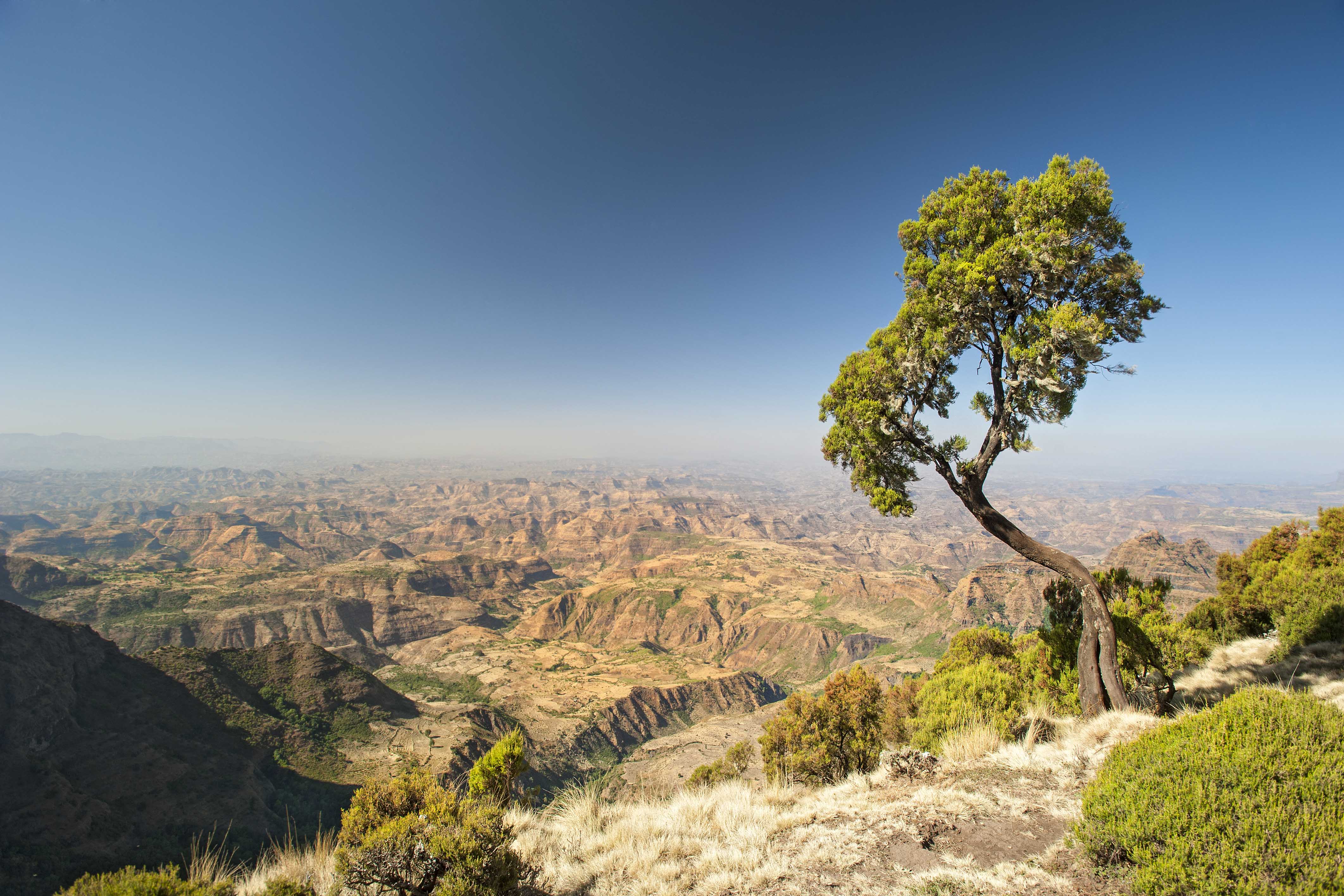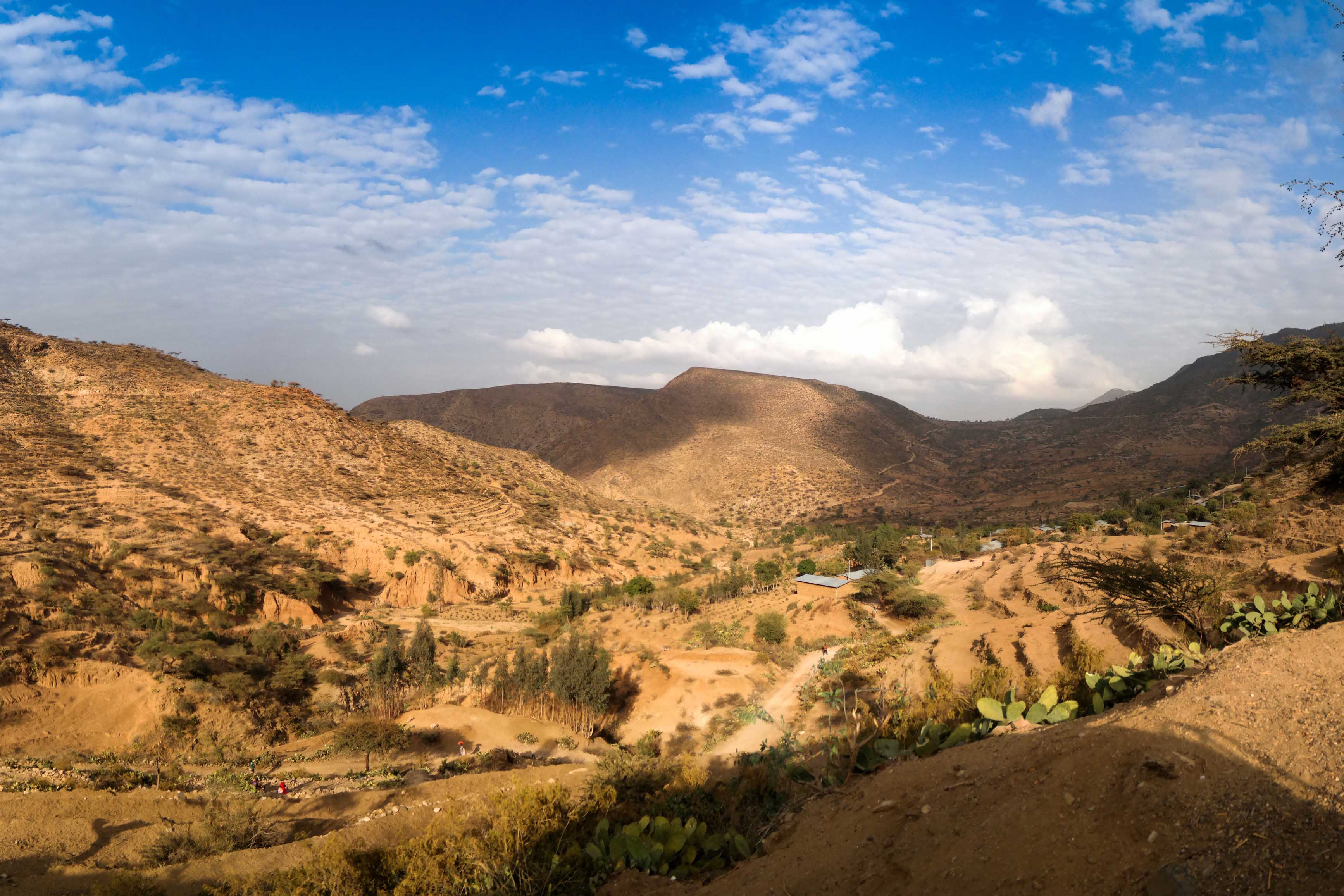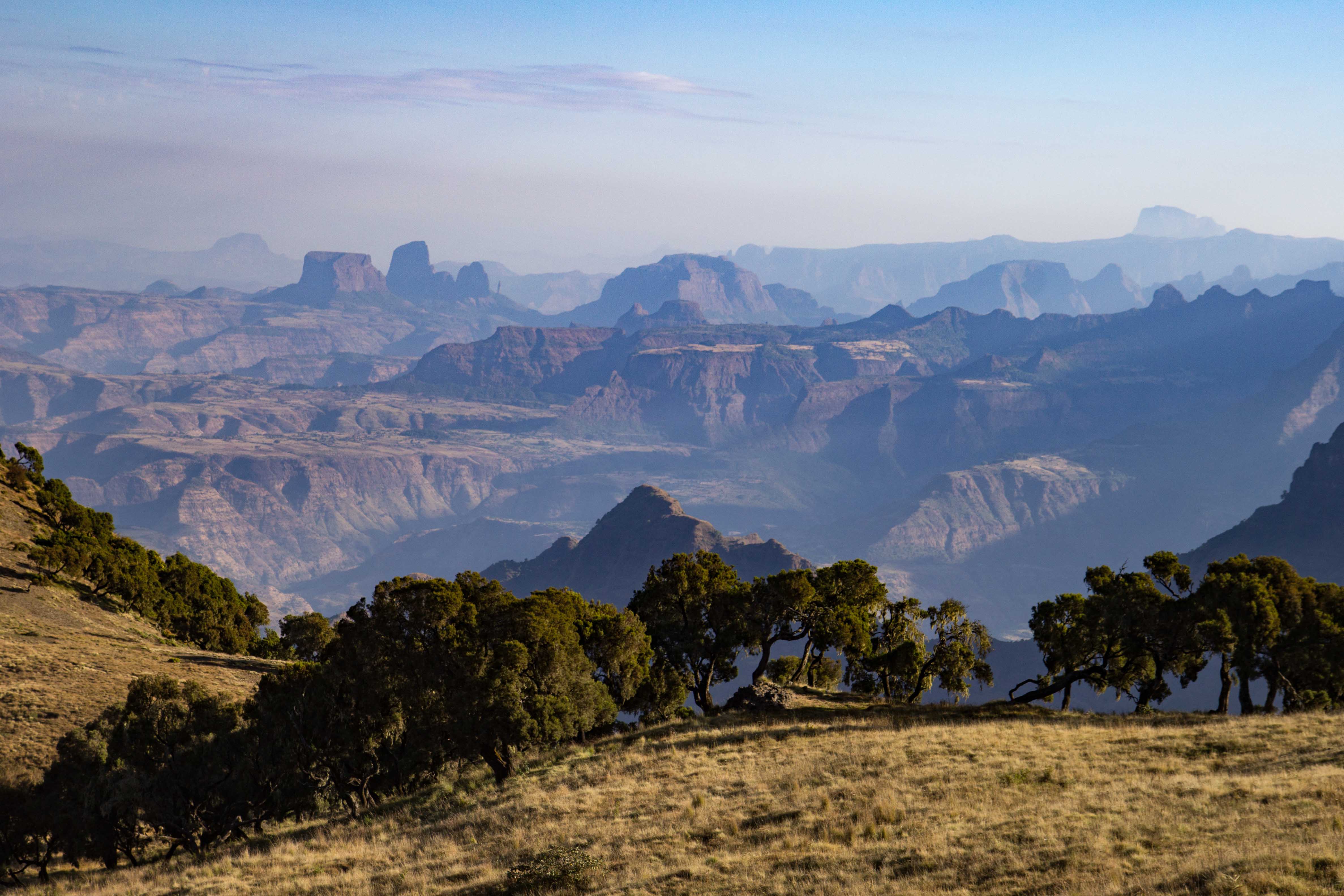Simoon Travel's Amelia Stewart has been getting to the heart of Ethiopia by seeing the country from the ground. In her first blog of the series, Amelia explores Ethiopia's sacred landscapes, and discovers the odd nit-picking baboon along the way...
1
Beguiling & Beautiful...
Ethiopia is home to some of the most spectacular, beguiling and beautiful landscapes in the world - and many of them are considered sacred. Throughout our journey of Northern Ethiopia of the country we have wound our way up, around, and down mountains, rumbled through tiny villages, big towns, past deep blue lakes, never-ending plateaus and vast agricultural plains, with the jagged peaks of mysterious finger shaped rocks often looming large in the distance. It is unlike any other landscape I've seen - but then again it sort of is - with bits from Tuscany, and some of the Drakensburg Mountains of South Africa and the sophisticated terracing in China all rolled into one. We are covering some serious distance - and all by road - in varying degrees of (dis)repair...In fact for one day the road was being laid out before us like a (rough) red carpet as we bumped along it dodging JCB's, forklift trucks, and a few vertiginous drops for an edgy ride. But on balance I think that ultimately this has to be the best way to do Ethiopia - to see the country at ground level and get a sense of how each region fits and flows seamlessly together (better still of course is to walk it - which we also did but that's a different blog). So my face was permanently stuck to the window pane of our little van and every five minutes the views appeared to get bigger and better. And then when you do stop, life appears in a great rush of inquisitive, curious, smiling raggedy children shouting the familiar 'Farenji! Farenji!' refrain.
2
The Simien Mountains
The Simien Mountains qualify as a sacred landscape. Located in the north west of the country, about 100kms north of Gondar the Simien's are home to Africa's largest mountain ranges with many peaks over 4000m. There is a purity and stillness to the air - and when I was there it was pungent with the sweet smell of the dog rose flower. Many of the trees have an unusual lichen growing on the trunks - also an indicator of how pure the air is and there are many rare and unusual plant species such as the giant lobelia and the red hot poker flower showcasing bold and brilliant colours. This vast national park is home to other endemic (and endangered) species such as the Ethiopian wolf and the Walia Ibex. Accompanied by two armed guards (in the unlikely event of a bandit attack) and our brilliant local guide Getachew, we did a gentle three hour stroll across one of the mountain plateaus - which you can walk out onto from the lovely Simien Mountain Lodge where we were staying. Almost five minutes into our stroll we came across a troop of Gelada baboons busy in their nit picking, squabbling and hole digging. I lay on the ground and watched them, fascinated by the similarities between us and them (especially the nit picking) and marvelling at the male baboon's wonderful wash and go mane and the bright pink heart shape stamped into their chests to attract a mate with. The troop must have been three hundred strong and they appeared completely at ease in our company. Much study has been done on this particular species - and uniquely - and rather movingly, when one of the troop dies, the others carry it to the mountain caves where they lay the body to rest. I couldn't stop thinking of the English Patient and wondered if they drew on their cave walls as well but I didn't play dead to find out.

3
The Tigray Highlands
The landscapes of the Tigray Highlands further up in the north, north east and west of Lalibela are also home to sacred landscapes - dotted with homesteads, churches and monasteries where hermits live in caves and the bones of saintly priests still lie where they lay down to die. These churches are very much living, breathing testament to a religion that has been evoked and practiced for centuries and in a landscape that has little changed. We sat on wooden rickety chairs listening to the priests chanting in Ge'ez (the ancient language of the Ethiopian church) swaying on their feet or resting on their wooden sticks before stepping outside to sweeping grand panoramic views of hills and hay bales, plodding cows and skipping children. Our brilliant accompanying lecturer, Jacopo, would try out his best Aramaic to the priest who would go behind velvet curtains to the place of the tabot (the sacred place where a replica of the Ark of the Covenant is kept) and bring out huge holy books some 500 years old written in Ge'ez on goatskin. Such precious items belong here and I think should never be taken away to be put behind a glass case in a museum (although obviously some argue that this is where they are best preserved for generations to come). Since returning I am reading The Chains of Heaven by Philip Marsden who walked through these landscapes over months and encapsulates them so beautifully that you will want to go and see for yourself.















